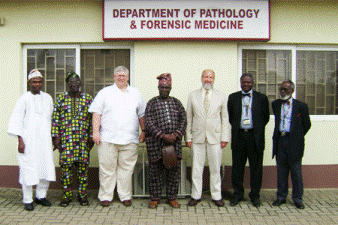Natural Resources, School of

Karl Reinhard Publications
Document Type
Article
Date of this Version
5-2006
Citation
Published in American Scientist 94:3 (May/June 2006), pp. 254-261.
Abstract
As the object of my scientific study, I’ve chosen coprolites. It’s not a common choice, but to a paleonutritionist and archaeoparasitologist, a coprolite—a sample of ancient feces preserved by mineralization or simple drying—is a scientific bonanza. Analysis of coprolites can shed light on both the nutrition of and parasites found in prehistoric cultures. Dietary reconstructions from the analysis of coprolites can inform us about, for example, the origins of modern Native American diabetes. With regard to parasitology; coprolites hold information about the ancient emergence and spread of human infectious disease. Most sensational, however, is the recent role of coprolite analysis in debates about cannibalism.
Most Americans know the people who lived on the Colorado Plateau from 1200 B.C. onward as the Anasazi, a Navajo (or Dine) word. The modern Pueblo people in Arizona and New Mexico, who are their direct descendants, prefer the description Ancestral Pueblo or Old Ones. Because the image of this modern culture could be tainted by the characterization of their ancestors, it’s especially important that archaeologists and physical anthropologists come to the correct conclusion about cannibalism. This is the story of my involvement in that effort.
Included in
Archaeological Anthropology Commons, Ecology and Evolutionary Biology Commons, Environmental Public Health Commons, Other Public Health Commons, Parasitology Commons


Comments
Copyright © Sigma XI Science Research Society. Used by permission.